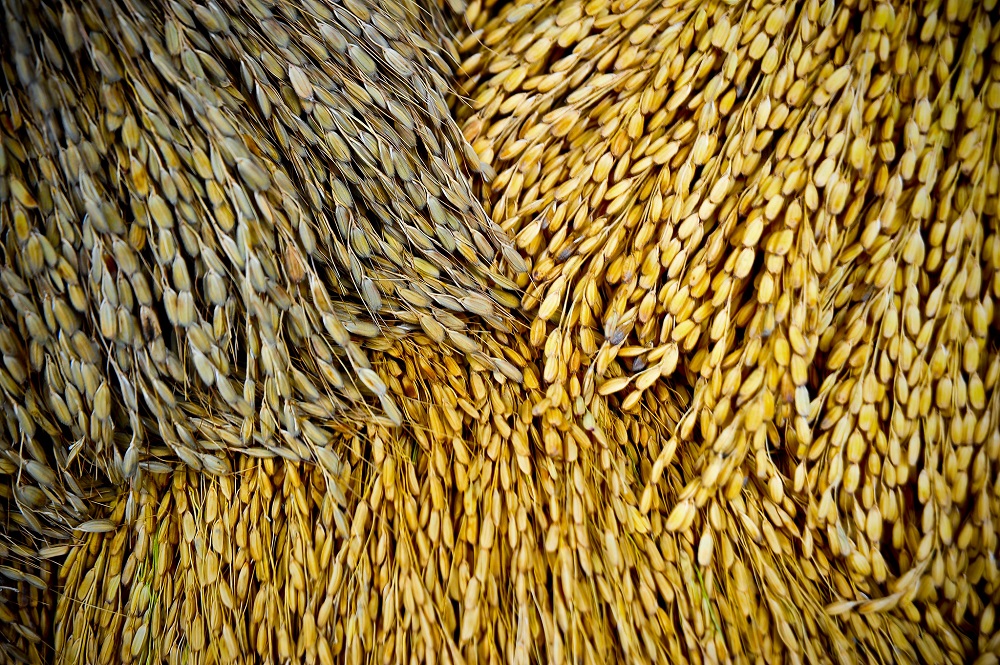By enabling farmers to reduce their losses and add value to their traditional rice varieties with modern technology, the Heirloom Rice Project helped improve their profitability—an incentive to continue growing the rice and preserve a significant cultural heritage site that is threatened by neglect.
For centuries, the ancestors of the upland tribes in the Cordillera Administrative Region (CAR) in the Philippines have been cultivating a rich and diverse collection of traditional or heirloom rice varieties. These varieties are grown using sustainable indigenous practices that, passed on through generations on ancestral lands that form the world-famous rice terraces. 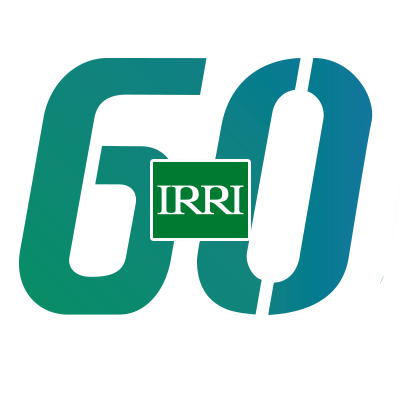 ,
,
According to the United Nations Educational, Scientific and Cultural Organization, which declared the Rice Terraces of the Philippine Cordilleras as a World Heritage Site:
“For 2,000 years, the high rice fields of the Ifugao have followed the contours of the mountains. The fruit of knowledge handed down from one generation to the next, and the expression of sacred traditions and a delicate social balance, they have helped to create a landscape of great beauty that expresses the harmony between humankind and the environment.”
Overcoming the barriers of the old ways
Heirloom rice appeals to the local and international consumers because these are grown organically, harvested using traditional practices, and possess exceptional aroma, flavor, color, and nutritional values. However, because it is grown in smaller areas and grown once a year, it has a low average yield of 2.5 tons per hectare (t/ha). Thus, heirloom rice farmers struggle to meet the quantity and the quality standards needed to improve their competitiveness in the local and world market.
To help the farmers, the International Rice Research Institute (IRRI), Department of Agriculture Regional Field Office in the region (DA-RFO-CAR), and the Philippine Rice Research Institute (PhilRice) launched the Heirloom Rice Project (HRP) in 2014. The aim of the three-year project, funded by the DA-Bureau of Agricultural Research (DA-BAR), was to raise the productivity and enrich the legacy of heirloom rice through empowering communities in unfavorable rice-based ecosystem. Building on the first phase of the project, the second phase of HRP was initiated in 2017 to conserve and increase the productivity and value of heirloom rice in the Cordillera by providing alternative marketing models to increase its value through interrelated research-based development approaches.
The project targeted around 400 farming families and processors, mostly subsistence women farmers who sell their produce in the local markets for minimal returns, in the provinces of Benguet, Ifugao, Kalinga, and Mountain Province.
Enriching the legacy through postharvest innovations
One component of the project focused on identifying opportunities that will enable the participating farmers to produce the required quality and quantity of heirloom rice for the premium markets.
The project team conducted a participatory needs and opportunities assessment (PNOA) to identify technology entry points where the project could provide support. PNOA results indicated that obtaining better equipment and conducting capacity-building activities related to postharvest could significantly improve grain quality. The team also conducted a rapid assessment of existing postharvest chain and processing centers for heirloom rice production to target specific activities.
The demonstration, testing, and validation of postharvest machines in the Cordillera were coordinated through cooperatives formed and assisted by the project: Benguet Heirloom Rice Farmers Agriculture Cooperative, Mountain Province Heirloom Rice Farmers Agriculture Cooperative, Kalinga Heirloom Rice Terraces Farmers Agriculture Cooperative, and Ifugao Heirloom Rice Producers Cooperative.
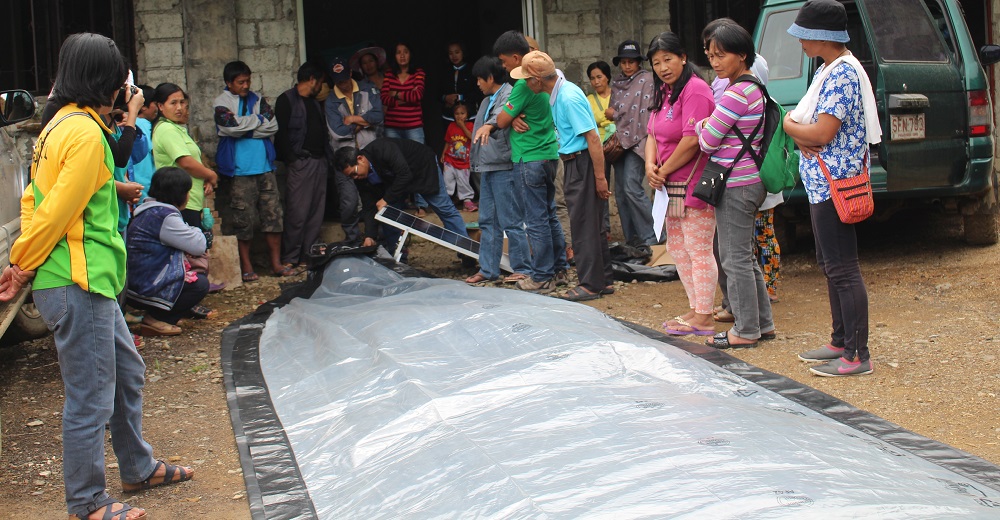
.
Harnessing the sun
“The team observed that postharvest losses occurred when farmers dry their paddy in the field,” said Joseph Sandro, an engineer at IRRI. “One solution the project introduced to solve the problem was the Solar Bubble Dryer or SBD.”
The SBD is a tunnel-type dryer made of plastic film with a small solar-powered 12V blower. It is designed to dry agricultural commodities while protecting them from sudden rain and unpredictable weather. Engr Sandro together with the team from PhilRice demonstrated the use of the SBD so the farmers can assess its performance.
The promotion of SBDs through the HRP prompted DA-RFO-CAR, to purchase 12 SBDs to cooperatives, the local government unit, and other project beneficiaries. The ownership of the equipment was transferred to the cooperatives and custodians or operators from the cooperatives were assigned to each SBD per site.
Breaking the drudgery
“The farmers also mentioned that they manually separate broken and whole rice grains after milling, a cumbersome task that takes several hours to days, said Engr Sandro. “To overcome this challenge, the project introduced a rice micro length grader to minimize the time and labor needed for doing this activity manually.”
The length grader is a machine used to separate broken rice from the whole kernels or head rice. Commonly available length graders in the market are huge because it is designed for big commercial rice mills.
“The project adapted the design of laboratory scale length grader with only 0.25 hp power input capacity and demonstrated the machine to the farmers,” he said. “This machine can separate brokens from headrice at 85 kg/h capacity.”
Organic pest control
“We also observed that farmers experience weevil infestation in stored paddy and milled grains,” Engr. Sandro said. “This greatly affects rice quality of the heirloom rice. To protect the grains from pest infestation, we introduced carbon dioxide (CO2) fumigation in a hermetic cocoon.”
CO2 fumigation is a process of introducing CO2 gas into hermetically sealed containers or cocoon and leaving it for several days. The process, an accepted method for organically labeled products, kills insects, larvae, and eggs due to the high level of CO2 and lack of oxygen.
“The farmers were taught how to fumigate using CO2 gas,” he explained. “They were also able to try hermetic bags, which are commercially available as Super Bags.”
The Super Bag is a farmer-friendly storage bag that makes the principle of hermetic storage available to farmers and processors at low cost. It can be used as a liner inside existing storage bags to safely store rice, maize, coffee, and other produce for longer time periods.
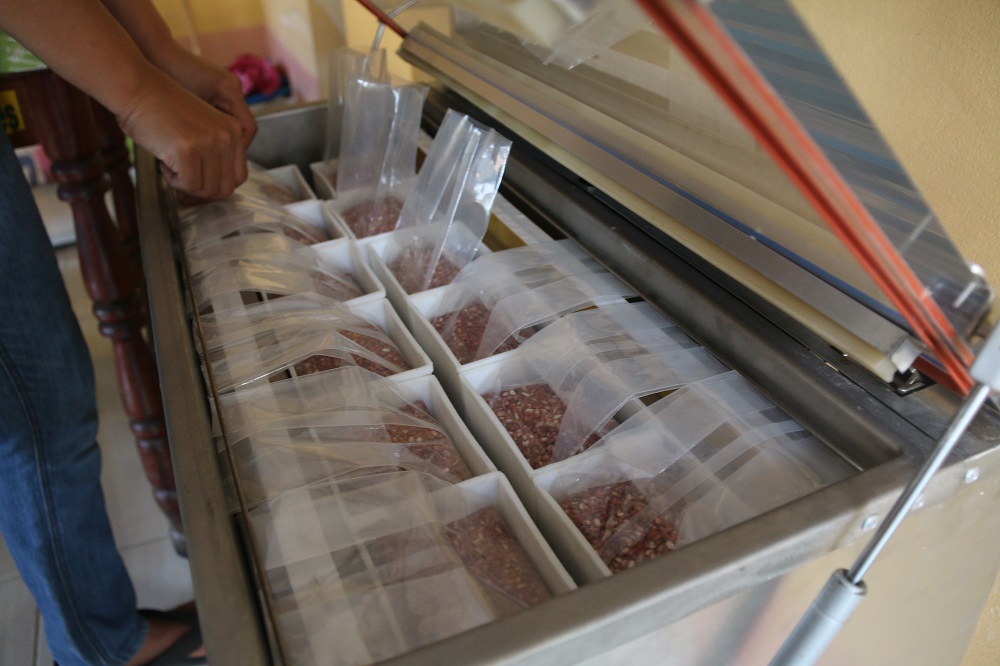
.
Capturing value through packaging
Upgrading strategies are equally important in increasing the value of heirloom rice. The proper packaging, for example, does not only protect the product but during transit and on retail shelves but it also serves as a statement for the product and the company behind it.
“We introduced vacuum packaging machine that the project introduced, tested, and distributed to the cooperatives for heirloom rice packaging is more efficient,” said Engr. Sandro. “It can pack up to 12 kg of rice or ten times more efficient than the existing system.”
The new packaging machine also packed rice in rectangular form which is aesthetically appealing. The validation of the technology was conducted in Hungduan, Ifugao; Bauko, Mountain Province; and DA-RFO office in Baguio City.
Upon seeing the effectiveness of the new machine, DA-RFO CAR immediately adopted the technology and procured several units. One unit was placed in the model processing center in Bontoc in Mountain Province.
This type of packaging machine is now being used by the four cooperatives formed under the project.
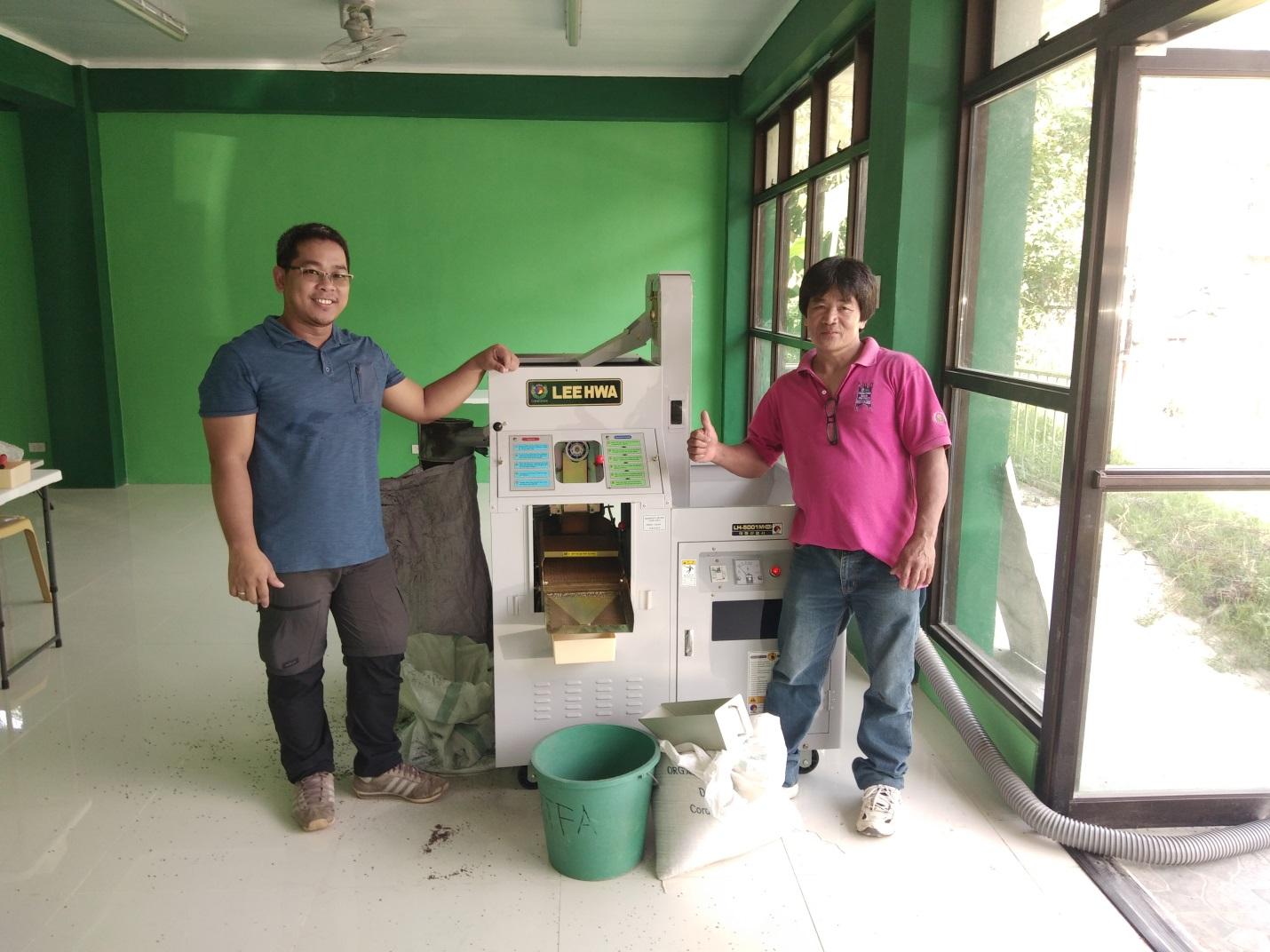
.
State-of-the-art postharvest processing
Funded by the DA-RFO CAR, HRP established a pilot site in Bontoc where postharvest processing machines were provided to the Mountain Province Heirloom Rice Farmers’ Agriculture Cooperative (MPHRFAC). The site contained state-of-the-art facilities suitable for heirloom rice processing.
The machines helped improve the quality of heirloom rice by enabling more efficient milling, grading, and storage, which also minimized rice weevil infestation, said Engr Sandro.
The HRP team provided technical advice and assistance in establishing the innovative technologies such as the compact milling machine, vacuum machine for packaging, equipment for carbon dioxide fumigation, grain length grader, digital balance, vacuum cleaner, and moisture meter. These machines were donated by Kellogg’s during the second phase of the project. The farmers were oriented in postharvest techniques in every demonstration of different technologies. The processing center now serves as a demo site for learning, capacity building, and an example for scaling.
“As a farmer and beneficiary, the interventions of the project were a big help to us in making our heirloom rice a quality product,” said Mr. Ramon Calde, chairman of MPHRFAC. “The project also helped make our work easier and improve our lives.”
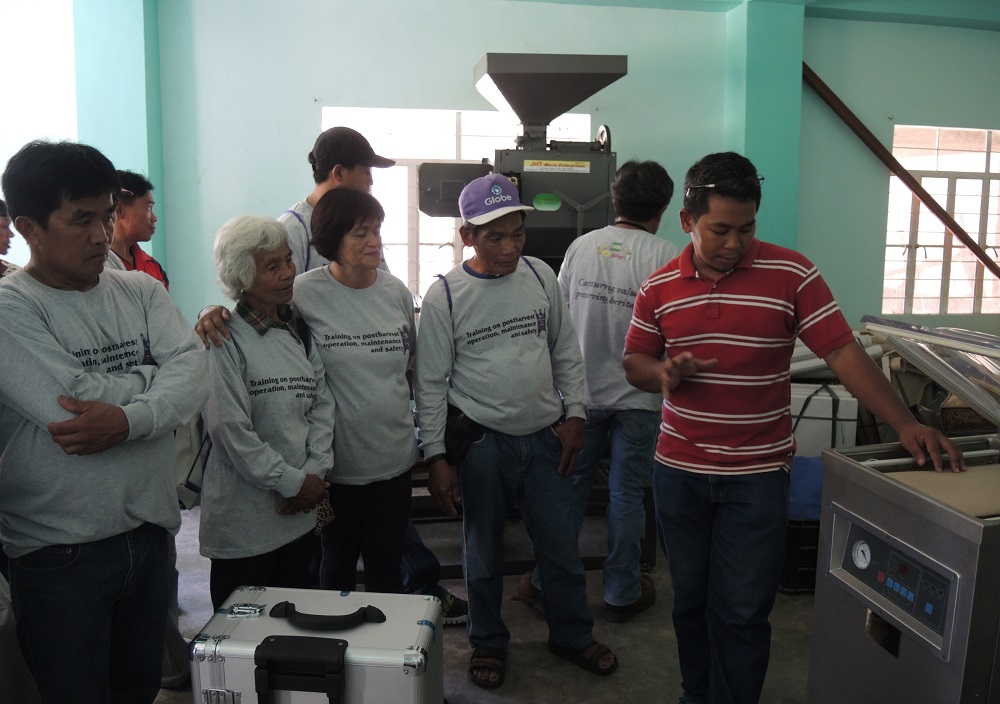
.
Measurable impact
Using these postharvest innovations improved the yield of heirloom rice, specifically in Kalinga. Surveys conducted in 2019 showed that farmers increased their yield by 11% from 2.75 t/ha to 3.04 t/ha. They also generated a higher income from about USD 100 per hectare to USD 190 or an 87% increase.
“We expect these figures to increase if we improve grain quality, longer shelf life, and reduce grain losses,” said Ana Cope, a scientist at IRRI and the project’s lead.
A legacy beyond the project
By enabling the farmers to reduce their losses and add value to their rice crop, HRP helped improve the profitability of growing heirloom—an incentive to continue growing the rice on the terraces. This, in turn, will help preserve the cultural heritage site that is threatened by neglect.
IRRI incorporates the learnings from the project, particularly the aspect of linking farmers with premium quality markets to increase their returns from their rice harvest and enabling them to invest in loss-reducing and quality-enhancing practices.
“More farmer-driven initiatives are seen to establish innovations in the region that will greatly enrich the legacy of heirloom rice in the years to come,” Dr. Cope said.
__________________
Ms. Quilloy is a senior communication specialist at the Mechanization and Postharvest Cluster under IRRI’s Sustainable Impact Platform.

